- THE WOMAN
- THE BOOK
- THE AUTHOR
- THE MORRIS-JUMEL MANSION
Secrets of the Morris-Jumel Mansion: Part 1 Secrets of the Morris-Jumel Mansion: Part 2 Secrets of the Morris-Jumel Mansion: Part 3 Secrets of the Morris-Jumel Mansion: Part 4 Secrets of the Morris-Jumel Mansion: Part 5 Secrets of the Morris-Jumel Mansion: Part 6 Secrets of the Morris-Jumel Mansion: Part 7 Secrets of the Morris-Jumel Mansion: Part 8 Madame Jumel's Grave
- SPECIAL EVENTS
- THE MADAME JUMEL BLOG
The Morris-Jumel Mansion in 1786: A "Genteel House of Entertainment"
Secrets of the Morris-Jumel Mansion—Part 8
In 1786 a thirty-four-year-old lawyer from Virginia, St. John Tucker, spent a pleasant summer in New York City. As a veteran of the Continental Army, Tucker took a particular interest in landmarks of the conflict—prime among them Fort Washington in Upper Manhattan, where the American forces had been defeated by the British and Hessians in November 1776.
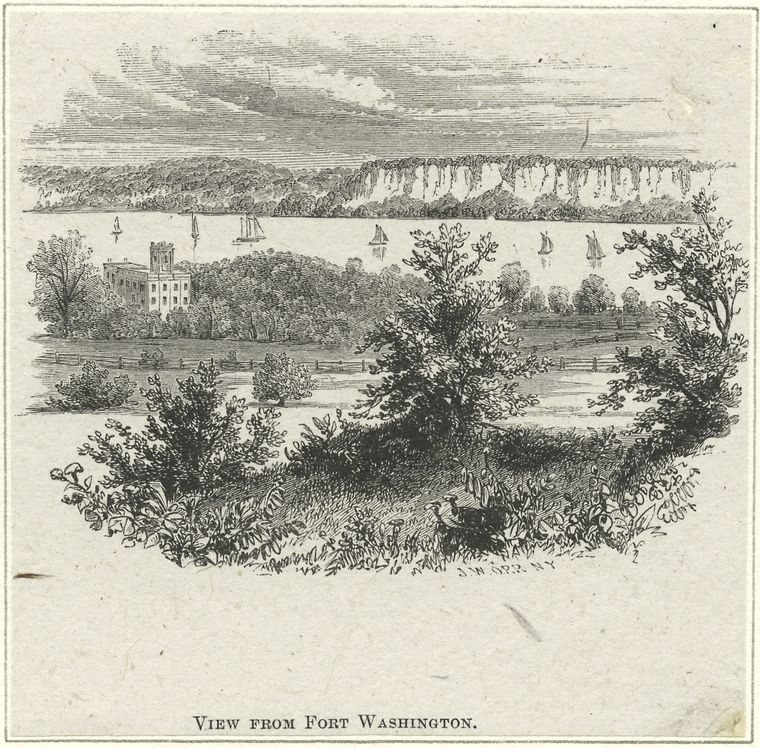
Ten years after the battle, the site was largely bucolic. Exploring it on Sunday, July 30, Tucker and a fellow Virginian, Col. Edward Carrington, found "some very fine Corn" growing in the fort. More poignantly, they observed "some tatters of American regimental uniforms still to be found on the rocks."
Despite the melancholy induced by the scene, Tucker took time to appreciate the expansive view of Harlem and the Hudson Palisades. Then he and his companion continued south. Their next stop, described in his diary, will be of particular interest to fans of New York's Morris-Jumel Mansion. Tucker writes: "Near to this place [i.e., Fort Washington], about a mile nearer to N. York, Col. Roger Morris built a superb house, which having been confiscated is now converted to an Inn; here we stop'd and took a Glass of wine and water."
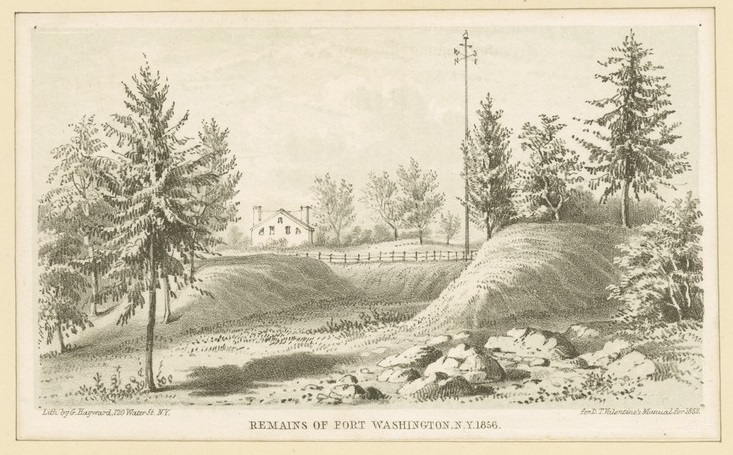
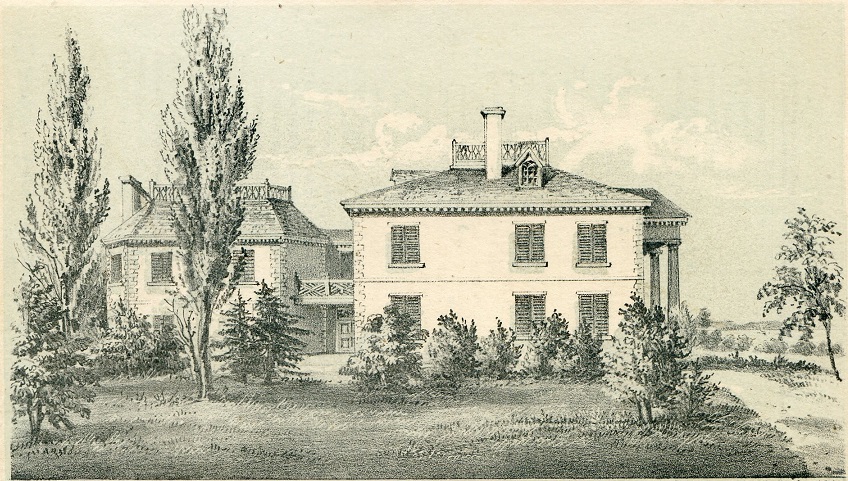
The Morris-Jumel Mansion’s brief incarnation as an inn has been little explored. This chapter in its history began in 1785, when the house was leased by an entrepreneur named Talmage Hall, who with several other men had acquired the right to run a stagecoach line from New York to Albany along the east bank of the Hudson River. As an additional income stream, Hall turned Roger Morris’s former property into an inn that would serve breakfast to stage passengers heading north from the city and provide refreshments, lodging, and stabling to casual travelers and day-trippers.
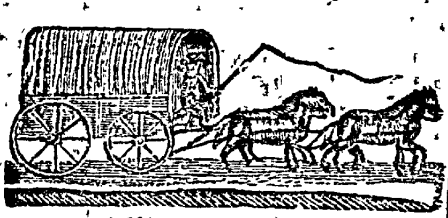
In May 1785, only a month after the first passengers boarded the Albany coach, Hall took out an ad in a Manhattan newspaper to promote his hostelry. "Parties from town, and travellers" could "be served with Breakfasts, Dinners, Suppers, Relishes, Tea, Punch, &c. at ten minutes’ notice." The "choicest liqueurs" were available, as was a unique space: "The Octagon room [was] very happily calculated for a turtle party." Desserts at this "genteel house of entertainment" included "Peaches, Apricots, Pears, Gooseberries, Nectarines, Cherries, Currents and Strawberries in their seasons."
Presumably a visit to one of the roof decks—or widow’s walks, as we would call them today—was a drawing card too, because St. George Tucker appears to have made the ascent on his visit in July 1786. In his diary, written for his stepsons, he explained that "the prospect from the top of the house is nearly the same as [the vista from Fort Washington]—but you have a better view of the plains of Haerlem, and the Eye not only takes in the City of New York, but the Highlands of Staaten Island and the narrows between that and Long Island, ten miles below the City.”
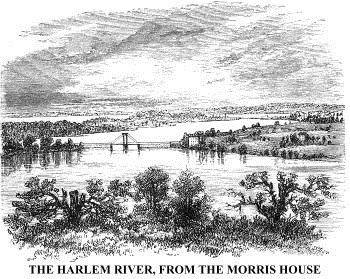
He was less taken with his immediate surroundings: "The spot on which this House stands is a mere rock," he observed, " so that I doubt whether it was ever a very agreeable residence either in summer or winter, being equally exposed to the scorching rays of the summer's sun as to the keen blasts of the winter." Discouraging words, to be sure! But the estate must have been a pleasanter place in the early 1770s, when Roger and Mary Morris were in residence. Tucker himself noted that Manhattan had been largely deforested over the course of the war: "Indeed the whole Island of New York since it was in possession of the British Forces is wholly cleared from Woods, a few scattering trees about some of these delightful seats with which it abounds being all that are now left."
The Virginian managed to enjoy pleasant excursions, nevertheless, including a second trip to the northern tip of Manhattan ("to Kingsbridge and a few miles beyond it"), followed by a return visit to the Morris house, the whole constituting "an agreeable day."
Unfortunately Hall’s Inn, as the mansion was referred to after its proprietor during this era—the name "Calumet Hall" sometimes applied to it appears to have been a twentieth-century invention—struggled for business. From spring through fall, New York-to-Albany travelers tended to take the water route up the Hudson River rather than going by land. Sloops could be becalmed for days if the wind dropped, but many voyagers preferred a tedious but comfortable journey afloat to two days in a jolting stage wagon. After Hall and his colleagues obtained the postmaster general’s contract to carry the mail in 1786, there would also be annoying delays while letters were offloaded and others picked up.
The ground route had the advantage during the colder months, when ice put an end to the river traffic, but limited daylight increased the length of the trip to three days. Nor was winter stage travel for the fainthearted, as suggested by an account written by a passenger who traveled the route several decades later, in the winter of 1831. He reported that hats froze to capes and passengers' cloaks to one another, thanks to the leaky roof of the coach: "In the morning we looked like some mountain of ice moving down the Gulf Stream. I thought the machine used at the Dry Dock would have been an excellent appendage to have lifted us bodily into the breakfast room."
In warm weather, however, the stage could be pleasant enough that locals used it to take short hops. Philip Van Cortlandt, who lived at Cortlandt Manor in Tarrytown, was a regular customer in the spring and summer of 1786. Some of the trips detailed in an invoice presented to him by Talmage Hall seem to have been strictly business—for example, “a seat 30 Miles & breakfast” in August. Others were apparently more social occasions, such as a June day when Van Cortlandt ran up a bill with Hall for a nine-mile trip, breakfast, “& 3 Ladies at Tea.” There is no record of where on the stagecoach line he took his meals on these journeys, but his travel almost always included some form of refreshment, which helps to explain why stage entrepreneurs tended to be tavern- or innkeepers as well. Isaac Van Wyck, one of Hall's fellow investors in the New York–Albany stagecoach line, owned a tavern at Fishkill where passengers traveling in either direction lodged for the night. Yet even that strategic location could not ensure steady traffic. A traveler in 1790 commented that although it was "a true inn," it was "entirely lacking provisions" in the summer, when "the majority of the passengers travel[ed] by water."
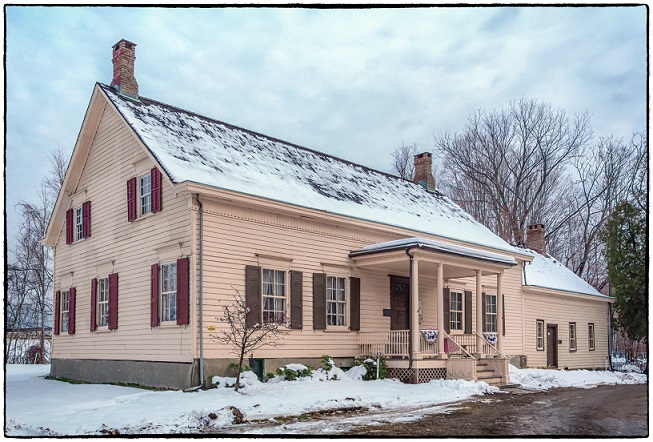
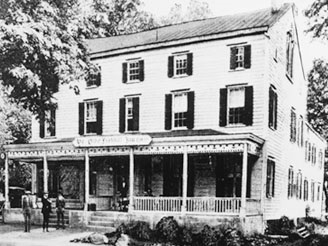
Hall made vigorous attempts to improve the business at his own hostelry. In April 1786 he published a bill of fare with prices and announced that he would "use his influence to prevail on each stage house on the routs [sic] to Boston and Albany to come into the above plan," in which a traveler would only have to pay for what he or she ordered. More commonly passengers participated in a "club" system, where they ordered a meal jointly and the price was divided among them. This was a bargain for big eaters, but an imposition on those who preferred a snack. It was even more unpopular with tavern keepers. They gleaned more profit from individual orders, but if they objected to the club system, the stage line would give its business to a different inn.
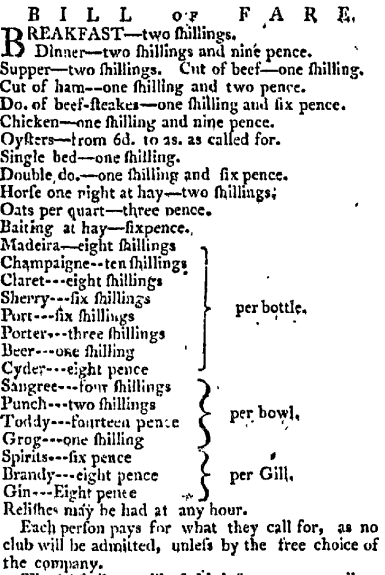
As Hall was one of the proprietors of the stagecoach line, he could ensure that his inn would remain one of the refreshment points for passengers, while instituting a pricing system that increased returns on food and beverages. His bill of fare (illustrated here) shows that guests had prix fixe options for breakfast, dinner, and supper, plus the choice of a few dishes that could be purchased separately: beef (probably roasted), ham, beef steak, chicken, and oysters. Alcoholic beverages were the most profitable offerings, with imported wines and spirits priced at a premium (madeira, champagne, claret, sherry, and port). The "Glass of wine and water" that St. George Tucker enjoyed reflects a practice that dates back to antiquity: diluting wine with water to make it lighter, more flavorful, and more aromatic—especially appealing for summer days.
Hall continued to permit club purchases if chosen freely by the passengers. The invoice he presented to Philip Van Cortlandt indicates that the system persisted side-by-side with the new purchasing options at the eating houses on the New-York-to-Albany line. For example, on July 18, 1786, Van Cortlandt ran up a bill for "a Seat and Club," and on June 6 he was charged for "a Seat 19 Miles Tea Supper Lodging & Club" (perhaps indicating that he paid for dinner or breakfast on the club system).
Hall picked up additional income from boarding horses, not only at his inn on Harlem Heights, but also downtown. By early March 1786, he had leased the stables of the City Tavern on Cortlandt Street near Broadway, where he offered to house and bait livery horses and horses belonging to travelers. He also kept an eye out for any opportunity to attract local residents to his inn. The detection of a mineral spring in the vicinity of the Morris mansion prompted him to organize a special event with an eight-shilling admission charge.
"IMPORTANT DISCOVERY" shouted the June 1786 announcement in a local newspaper:
A MINERAL Spring of Chalybeate, sulphureous and acidulous quality, has been discovered ten miles from New-York, at the Harlem Heights, between the North-River and Morris's house, Monday the 26th of this month, at 11 o'clock A. M. It shall undergo a public examination, when at the same time the Discoverer will give a lecture on the origin, variety of contents, and medicinal powers of Mineral Waters, and his opinion on the cause of warm Springs, founded on facts in experimental Philosophy.
Ladies and Gentleman who admire the various works of nature, encourage what tends to the public welfare, and in preservation of, and restoration to health, would choose rational and pleasant means, and the Gentlemen of the Medicinal Faculty in particular, will honor this Analysation with their respective presence at Morris's house, where due attendance will be paid by
TALMAGE HALL.
Tickets to be had at the house, 8s.
If the discovery led Hall to envision Harlem Heights as a potentially profitable resort, his hopes were disappointed. Although a few other discoveries of chalybeate (i.e., iron-bearing) water on Manhattan Island were made in the early nineteenth century, Upper Manhattan never gained fame as a spa.
Nor did Hall manage to make a success of his multiple entrepreneurial ventures. The evidence suggests that he was overextended financially. In November 1786 the New York–Albany stagecoach line was taken over by a newcomer. Within a month Hall had filed for bankruptcy, losing possession of the mansion on Harlem Heights as well. The investors who owned the house offered it for lease in spring 1787, with or without the accompanying 130 acres of meadows and farmland.
Hall maintained a foothold in the stagecoach trade by taking over the City Tavern on Cortlandt Street where passengers embarked, and where previously he had leased the stables. An advertisement described the location: 49 Cortlandt-Street, “leading from Oswego-Market to Powles-Hook ferry, being the first brick house on the left hand from Broad-Way.” By mid-March 1787 Hall was the proprietor (renaming the building Hall's Tavern), but this business, too, failed. In September the departure point for the Boston and Albany stages was moved to the "Boarding and Lodging-House" of David Osborne on Water Street. When the terminus was moved back to the Cortlandt Street tavern in December, a new innkeeper, Christopher Beekman, was running the property.
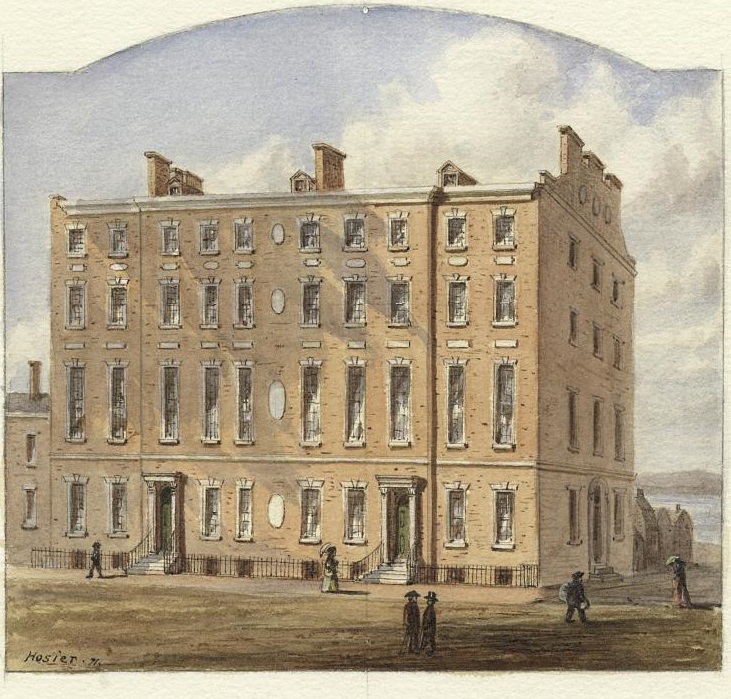
Hall may have gone south to make a fresh start. In 1794 a "Talmage Hall, retailer" lived in or near Savannah, Georgia. The details of his life there (if it was indeed he) are unknown. But his two-year tenancy of the Morris-Jumel Mansion secures him a small foothold in history.
Copyright Margaret A. Oppenheimer, July 13, 2017.
Sources: St. George Tucker’s visit to New York is described in Bettina Manzo, "A Virginian in New York: The Diary of St. George Tucker July–August, 1786," New York History 67, no. 2 (April 1986), 177–97. Information about the New York–Albany stage line in the era of Talmage Hall comes chiefly from advertisements in Loudon's New-York Packet and the New-York Journal, and Weekly Register. The description of winter stage travel comes from Alice Morse Earle, Stage-Coach and Tavern Days (New York: The Macmillan Company, 1900), 362. The traveler who commented about Isaac Van Wyck's inn in Fishkill was Count Paulo Andreani; see Cesare Marino and Karim M. Tiro, eds. and trans., Along the Hudson and Mohawk: The 1790 Journey of Count Paolo Andreani (University of Pennsylvania Press, 2012), 41. Philip van Cortlandt’s invoice from Talmage Hall is transcribed in Jacob Judd, ed., Correspondence of the Van Cortlandt Family of Cortlandt Manor 1815–1848 (Tarrytown, NY: Sleepy Hollow Restorations, 1981), 566–68. The announcement of the discovery of the mineral spring near what is today the Morris-Jumel Mansion appeared in Loudon's New-York Packet, June 22, 1786. The advertisement that mentions the suitability of the mansion’s octagon room for turtle parties appeared in the same newspaper, on May 26, 1785. This system of passengers clubbing together for meals is described in a pamphlet titled (at considerable length) Reasons humbly offered to the Consideration of Parliament, for the suppressing such of the Stage-Coaches and Caravans now travelling upon the roads of England as are unnecessary, and Regulating such as shall be thought fit to be continued (1700). For the practice of diluting wine with water, see Harold McGee, "To enhance flavor, just add water," New York Times, July 27, 2010.
Looking for more secrets of the Morris-Jumel Mansion? Click these links to find part 1, part 2, part 3, part 4, part 5, part 6, and part 7.